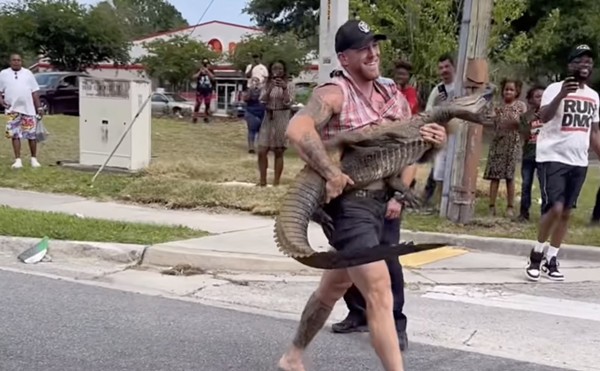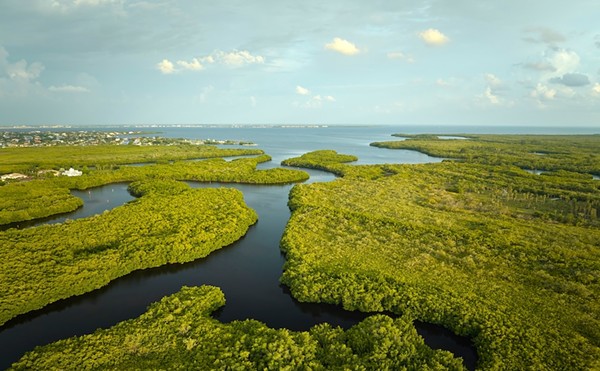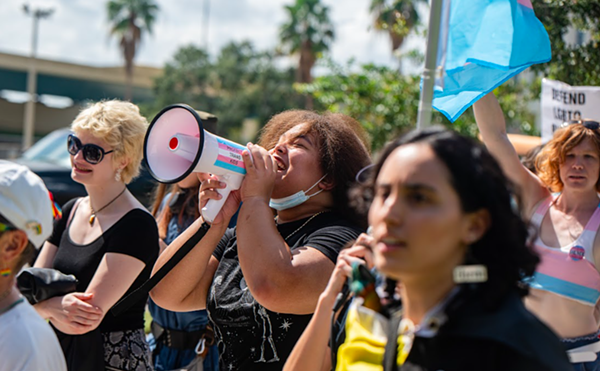You'd think that after the last attempt to bring a $600 million light-rail transportation system to Central Florida failed three years ago only a masochist would want to broach the subject again.
After the last light-rail battle, the head of the region's transportation agency lost his job, governments sued each other, county and city officials were angry at one another, Mayor Glenda Hood faced a recall petition, and politicians were ridiculed for spending $50 million on consultants with nothing to show for it.
But in 2000 and again this week, a national consulting agency has held workshops asking the public to help design a light-rail system. The first phase of the system is expected to run on a 20-mile stretch of Interstate 4, the main north-south artery in Orlando.
Workshops in 2000 focused on the northern alignment, from Altamonte Springs to downtown Orlando. This week's workshops will focus on the area from downtown to the Orange County Convention Center.
The object of the workshops is to do a better job selling the public on light rail -- a scaled down train system -- so that public officials face fewer obstacles. "We started out with very little opposition," says Tony Walter, manager of strategic planning at Lynx, the regional transportation agency. "But there was a change in leadership, a change in the economy. We thought we had commitments that weren't carried through. This `effort` is more grassroots."
The workshops, which weren't held during the first light-rail campaign, are one sign that the second campaign will be different. Transportation planners also have formed a finance committee and oversight committee -- two committees that were not part of the first light-rail effort.
Light-rail proponents also have held a series of meetings with a group called the Stakeholder Task Force, the members of which are likely to have an impact on whether a system is built. Among them are the Sierra Club, SeaWorld, Universal Orlando Resort, the I-Drive Merchants Association, the African-American Chamber of Commerce and the Central Florida Hotel and Lodging Association.
Noticeably absent is The Walt Disney Co., officials of which are being briefed on developments independently of the group meetings. Disney helped end one round of the debate when it pulled its support for a rail system between the airport and Disney World after I-Drive merchants became part of the plan.
Yet the Stakeholders Task Force has already been influential in helping transportation planners decide which routes or alignments will work. For example, planners decided against an alignment that would have traveled down Parramore Avenue on the west side of I-4 because it would have been too disruptive to property owners. Similarly, an alignment along South Street was dismissed and a route was altered around Lake Lucerne.
Yet even with the new safeguards in place, transportation planners are facing, at best, a seven-year delay in building a rail system. Funding isn't as assured as it was in 1999 when Bill Clinton placed Central Florida on his mass-transit to-do list. And planners still have to draft environmental-impact studies, then persuade the federal government, which will pay roughly 50 percent of the cost, that Central Florida is worthy of a light-rail system the second time around.
Some political observers are betting that no matter how inclusive planners become, bringing light-rail to Central Florida will be nearly impossible. There are too many competing agencies -- private and public -- to accomplish such a high-ticket, piecemeal project. There are too many people who don't want anything to do with government projects. And public transportation, especially in the South, is often seen as tainted -- serving only minorities and the poor.
Among much of the populace, "there's an overreliance on the private sector," says Michael Hoover, a Seminole Community College political scientist. "There's a misperception of what the public sector should be responsible for. We have an attitude where mass transportation has never been important. 'I can't go where I want to go. I have to deal with people I might not want to.' Many people prefer to go from the privatized realm of their home to the privatized realm of their automobile to the privatized realm of wherever they are going."
Unfortunately for transportation planners, there are few alternatives to light rail. A Florida Department of Transportation study found that I-4 would have to be expanded to 16 lanes in order to accommodate projected traffic demands. Already, more than 180,000 cars pass each day through several key I-4 interchanges. FDOT is currently in the beginning stages of expanding the highway, from Oscoela County north to Daytona Beach.
But FDOT's policy is to limit highways to three general-use lanes and two special-use lanes.
So, don't expect the light-rail debate to die anytime soon. Expect it to be a very long time before you might one day be able to hop a train to get around the metropolitan area.
"I don't think we have the political climate for it," Hoover says. "People will ask, 'How am I benefiting from this?' There's the old saying: What has the future done for me?"


















